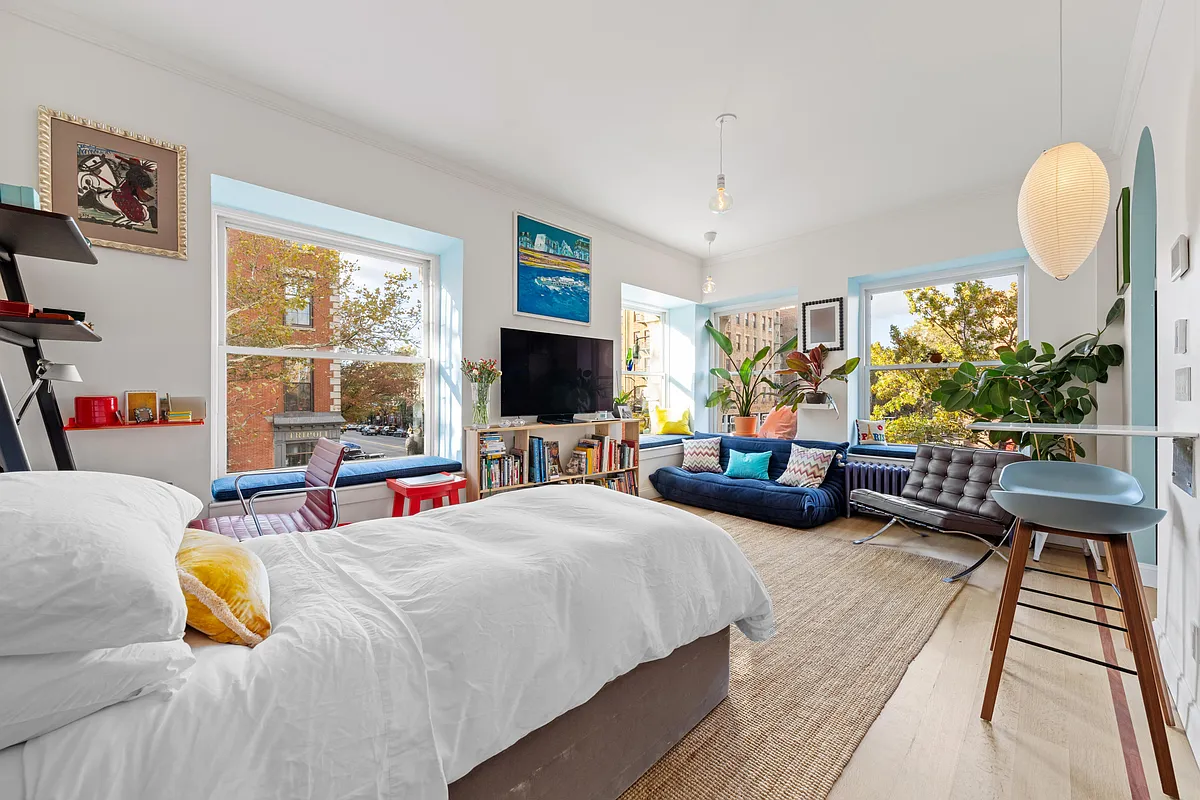The Lowdown on 31 Joralemon
[nggallery id=”43834″ template=galleryview] Last week there was much ado when a reader sent in a photo of 31 Joralemon Street in Brooklyn Heights, where an entire sidewall had been removed. We’ve now got all the dirty details from Michael Ingui from Baxt Ingui, the architects on the job. Pretty interesting—and scary: The existing wall at…
[nggallery id=”43834″ template=galleryview]
Last week there was much ado when a reader sent in a photo of 31 Joralemon Street in Brooklyn Heights, where an entire sidewall had been removed. We’ve now got all the dirty details from Michael Ingui from Baxt Ingui, the architects on the job. Pretty interesting—and scary:
The existing wall at 31 Joralemon Street was a frame wall with brick infill and at one point in its life was an interior party wall. We did interior demolition (filed under a separate permit) and uncovered a pretty scary sight. At some point this wall shifted and created an S curve on multiple levels. The wall came in past the center by 6 at the garden level, out 6 past the center at the parlor level, back in again at the second floor, and back out again at the 3rd floor. The walls were furred on the interior masking the condition and the exterior had a cement coating applied that in some areas was 5 thick to mask the issues with the wall. It is amazing that the wall stood for all of these years.
If you have to be in a situation like this it is nice to have a good team. Sam and the crew from Creative Renovations took the wall down methodically (not easy given all of the issues), the house is fully shored and the engineer on the project is D’Huy Engineering (the structural is filed and approved at the DOB and LPC). At the end of the day the wall will look just like the old wall except that it will actually stay up. The photos attached show the house from the street (taken today), Interior shoring (there are a few methods that the engineer is using including using the bearing wall by beefing it up with 4 x 4’s and bracing it), shoring at the garage, view of the stairs.
Good to hear it’s all under control!
31 Joralemon Reno Attracts Scrutiny [Brownstoner]





Nah I do my own snarky posts
Are you posting today for benson, fsrq.
Yup – they dont build them like they used to – THANK GOD
“dig up my old geology textbooks”
LOL bxgrl
i do love a GOOD renovation. not the crap people generally do because they cannot afford to do it right. this is like the electric in the ditmas park renovation. love it!
porosity, hardness and other measures, bxgrl. In the case of brownstone which, if i remember correctly geologically is between a sandstone and a granite, it’s the tightness of the grain and the amount of quartz that has a lot to do with it. Also, like someone else said, how it is cut makes a big difference.
I’ll look for the link.
What makes crappy stone a crappy stone, minard? Can you tell the quality of stone by where it was quarried? I know that’s the case with marble. I need to dig up my old geology textbooks- I love this stuff.
c-gar, I recollect seeing slate myself, nice contrast with the brick.
It really had much more to do with the quality of the stone than how it was set. Even monolithic pieces of poor quality stone sugars and powders off. I’m not sure there is much truth in the conventional wisdom about the layers being horizontal or vertical. Crappy stone is just crappy stone.